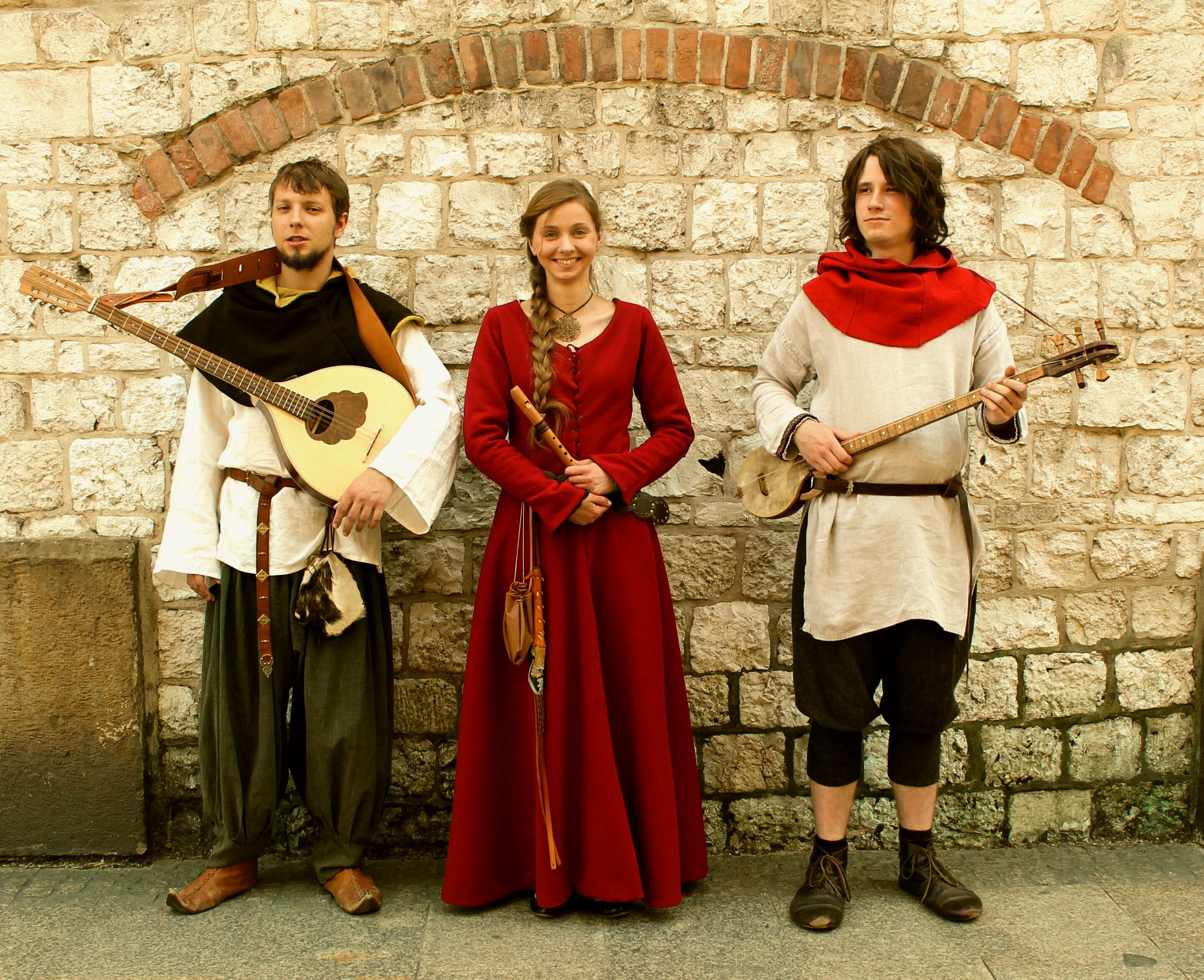Imagine a world where no one knows the notes, though music plays everywhere. A world where to learn to play an instrument you have to make it yourself, and the only instruction you can get is the appearance of a similar instrument from a mysterious old man who has just visited your village.
Imagine a world where no one says “you’re playing it wrong”, and the only rule is, “play it so you don’t get kicked out of the tavern”.
Sounds beautiful, or scary? That’s a question everyone has to answer for themselves. But this is, in a nutshell, what the life of a musician looked like in the Middle Ages.
1. Strange Ages, Middle Ages
From today’s point of view, those were very strange ages. The Dark Ages, as they are called.
I would like to stop here and talk a bit about those times, which were the beginning of the history of music in Europe. About the times when music was as simple as the people who made it.
Nameless, uncomplicated, and at the same time beautiful, thrilling to dance to, full of animal instinct.
Welcome to the Middle Ages.
At the outset, it is important to emphasize the fact that we are talking about an epoch that lasted almost a thousand years.
Beginning with the symbolic fall of the Roman Empire in 476, and ending with 1492, when Columbus discovered America. The dates are, of course, conventional. The fact is, however, that changes and evolution of music happened very slowly at that time and it is difficult to capture specific moments, events or people, which were milestones in the development of the field. However, I will try to capture the atmosphere of those times, which for a musician who loves freedom and improvisation, could seem an ideal era. (Provided we are not accused of heresy and sentenced to death)
Music in the Middle Ages functioned simultaneously in three different areas, essentially creating the first, musical genres.
These were:
Sacred music – common in churches and temples
Court music – resounding in the chambers of great magnates
Folk, secular music – played around bonfires, inns and villages.
2. To the glory of God
Sacred music, being an inseparable element of developing Christianity, laid the foundations for choral music. The familiar “Gregorian Chants” composed by clergymen resounded in echoing chapels, lending mysticism to church rituals. Gentle one-voice melodies, with time developed into increasingly rich harmonic forms, calmed the nerves of the faithful, as well as being a form of praying for their creators. A separate article could be written about the development of choral music in the Middle Ages, as the development of this “genre” is best documented thanks to the priests, who were better educated than the rest of the society.
For now it is enough to know that over the course of a thousand years sacred music evolved from simple one-voice vocal forms to rich polyphonic forms.
It was in the darkness of temples, by candlelight, that monks created the first musical notation and were the first to define the concepts of dissonance and consonance, as well as the principles of counterpoint.
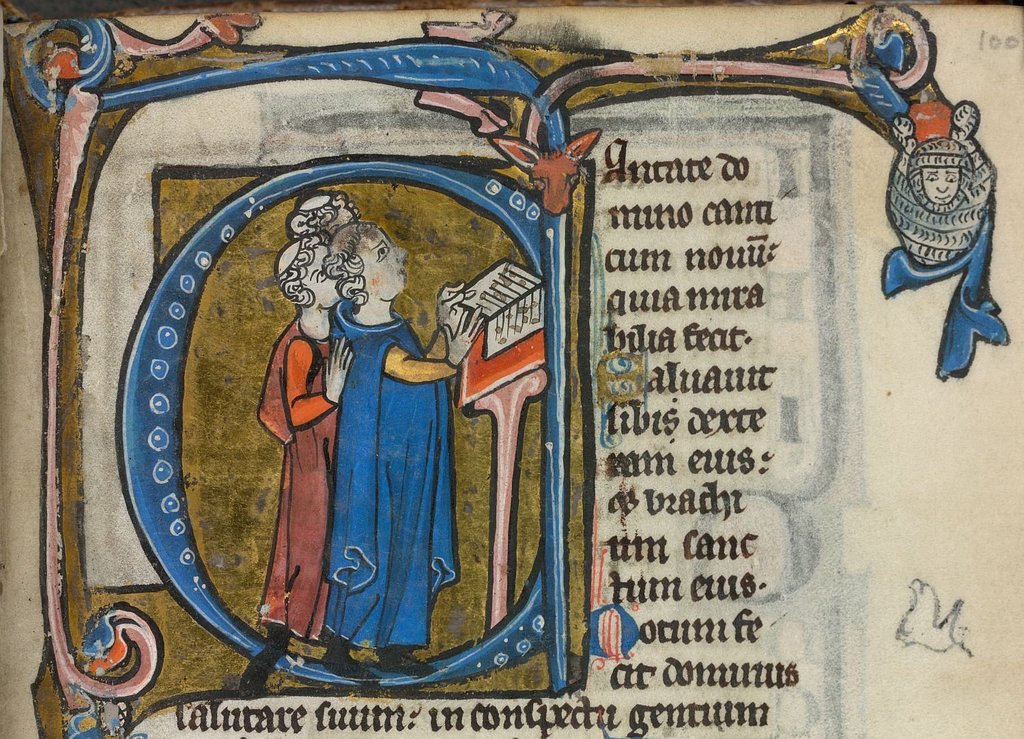
To the glory of God, organs also appeared in churches, thanks to which church music became more powerful in its message, and artists were given a tool to experiment with ever larger musical forms.
The sacred music of medieval times laid the foundation for the further development of classical music. And while the division into popular and classical music, in a way, crystallized in the 20th century only, in none of the epochs, this division was so clear as in the Middle Ages.
3. The village sings, the village dances
The situation was completely different among the simple society, living in villages and towns.
Music is an integral part of human life. In fact, it has existed since the first people came up with the idea that you can hit a stone against a stone at equal intervals, thus creating a rhythm. So it’s no wonder that the need to interact with music is written into our DNA. It was no different with the simple, unable to write and read inhabitants of villages and towns.
There, music had purely utilitarian and entertaining character. Anyone who felt like singing, or had enough dexterity to carve a pipe out of wood, or sew a goat skin to a hollow tree trunk to make a drum, could become a musician.
These days, we are used to unification. We have musical genres, we have the need to pigeonhole and assign music to certain frames.
In medieval times, there was no such thing.
Let’s imagine an anonymous peasant, who played falsely random melodies on a flute he made himself, to make grazing cows pleasant.
This peasant, in the evening, would sit by the fire after a hard day’s work, take out his flute and continue playing the same melodies, often to the accompaniment of a drum brought by another peasant.
Whole villages could dance to these tunes. By clapping, stamping, and laughing, the village community unconsciously created a musical genre that today we call “Folk Music”.
And these nameless peasants with pipes under their belts became the artists of the time. And though they themselves are lost in the mists of history, many of their melodies survive to this day.
Imagine an anonymous travelling musician, going from village to village with a lute, flute, drum or hurdy-gurdy on his back. He would play melodies heard from other musicians while singing stories based on events happening in the kingdom and surrounding villages. After the stories, it was time to dance. People listened, danced until dawn, and processed the tunes they heard. The melodies that were most catchy were later picked up from the ear by some other village player, who usually added something of his own to the tune.
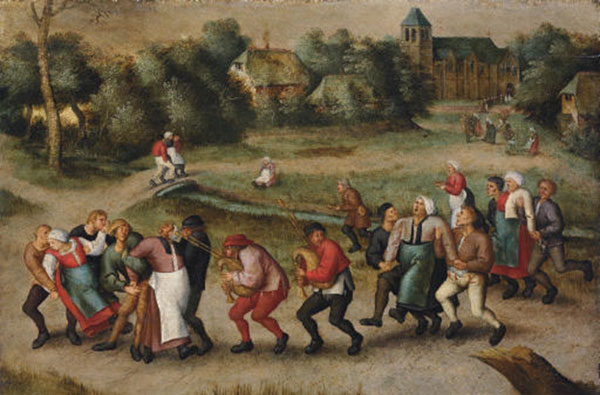
In this way, over the course of several hundred years, we got real “standards” of folk music, played in a similar way all over Europe, passed from mouth to mouth, from ear to ear.
Today historians can argue about whether a given melody has Italian or French roots. But in practice it is completely unverifiable, because the same melody, with only minor differences, was played in both Italy and France.
Finding the first link of this process is impossible, and in practice, with a high probability, at its beginning we would find a simple peasant with a pipe in his pocket, playing melodies to his cows.
Related: Polish Folk Royalty-Free Music focus at Shockwave-Sound.com [Update 2021]
4. The Songs of Deeds
The third area of music development during the Middle Ages was the royal courts.
In rich centers, gathering the most eminent minds of the time, there was no lack of spiritual needs as well as money for their development.
Music was to bring joy to the mighty, to add splendor to ceremonies, and to resound in castle courtyards and town squares.
There also appeared wandering singers, popular throughout Europe – Troubadours (France), Minnesangs (Germany), Skalds (Scandinavia)
They composed ballads, songs and motets describing great events in the history of the Kingdom. Their performances were full of stories about love, battles and bravery of knights.
The most famous such bard was the French musician and poet Guillame de Machaut, who left behind several dozen works in the form of ballads, songs of deeds and other literary forms.
Most music from the Middle Ages has unfortunately been destroyed and fallen into oblivion. However, there are a few collections of medieval music that have survived to this day and are an invaluable source of knowledge about the music of the time.
“Chansonnier du Roi” – a 13th century French manuscript containing the largest collection of music practiced by the Troubadours. The book also included a description of the dances and forms of the melodies of the time.
“Llibre Vermell de Montserrat” – a 14th century manuscript from the French monastery of Montserrat. It contained 172 folk songs and hymns, sung at pilgrimages.
Cantigas de Santa María – a thirteenth-century collection of 420 songs in honor of the Virgin Mary with musical notation, written in Galician-Portuguese. They were created during the reign of Alfonso X, King of Castile.
These collections, for the most part, were a sort of “medieval hit list,” meaning that they contained the most popular melodies of the time. Melodies that were so good that they passed from mouth to mouth, from ear to ear for several hundred years before they were written down. These melodies, until now, have not lost their timeliness and, properly arranged, they can touch or inspire to dance.
5. Instruments of the Middle Ages
In the Middle Ages, apart from vocal pieces, instrumental music and vocal-instrumental music were created. Trios were popular.
Melodic instrument (flutes, bagpipes, bombards, hurdy gurdy)
String instrument (lutes, harp)
Percussion instrument (drums and percussion)
This arrangement of musicians worked well both in concert conditions and when the whole village came together to have a dance.
One of the most interesting and characteristic instrumental techniques of the Middle Ages is the “bourdon” or “drone” technique. It involves the creation of two, three or four voices, of which the highest voice plays the melody, and the remaining voices hold one constant sound, creating the harmonic basis (usually the major, but also the fifth and the octave in more complex cases). One of the most interesting and popular instruments of the Middle Ages, using the bourdon technique, are bagpipes and hurdy gurdy.
Bagpipes
A bagpipe, in simplest terms, is a bag made of animal skin into which are inserted several pipes that have reeds. When the bag is inflated with air under the appropriate pressure, the pipes begin to make sounds. Bagpipes have always had at least two pipes – one that holds a constant sound forming a harmonic base (drone) and a melodic pipe that was played using the flute technique.
Most people equate bagpipes with the national instrument of the Scots. And this is absolutely true. However, not many people know that during the Middle Ages there were hundreds of types of bagpipes and every country had its equivalent of this instrument, although these instruments could differ significantly from each other in terms of construction, sound or playing technique.
For example.
Irish bagpipes (Uillean Pipes) had an additional bellows, by means of which air was pumped into the bag (Not, by means of the mouth)
Italian bagpipes (Zampogna) were made from a whole goat, and had two melodic pipes.
Swedish bagpipes (Sackpipa) had a single reed, while most types of bagpipes had a double reed. This caused the Sackpipa to produce much lower sounds than double reeded bagpipes.
Basically, every country has a different design, a different curiosity, and different technical solutions that often defined the sound and character of the culture in which they were found.
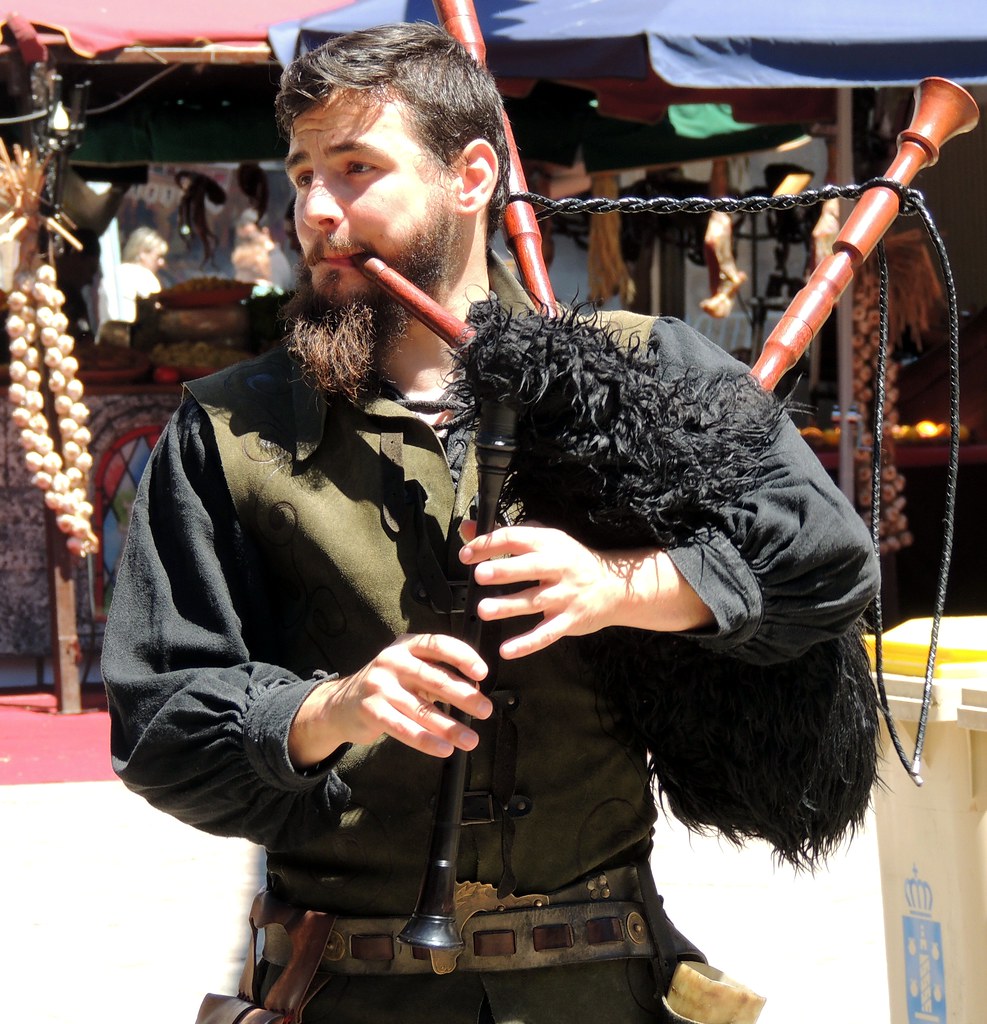
Hurdy-Gurdy
The second incredibly interesting instrument is the hurdy-gurdy.
One can say that this instrument was the keyboard of the Middle Ages.
This, one of the most complicated instruments of its time, had taut strings leaning against a crank. When a musician turned the crank, he made the strings vibrate, just as a bow makes violin strings vibrate.
Then, using the keys, he would change the pitch of the notes, just as a guitarist changes notes by pressing the frets.
It sounds quite complicated, but in fact the hurdy gurdy was not a difficult instrument to use.
It also, like the bagpipe, had both melody and bourdon strings, making it a very self-sufficient instrument that was very often used by lone itinerant musicians who sang ballads while accompanying themselves with the hurdy gurdy.
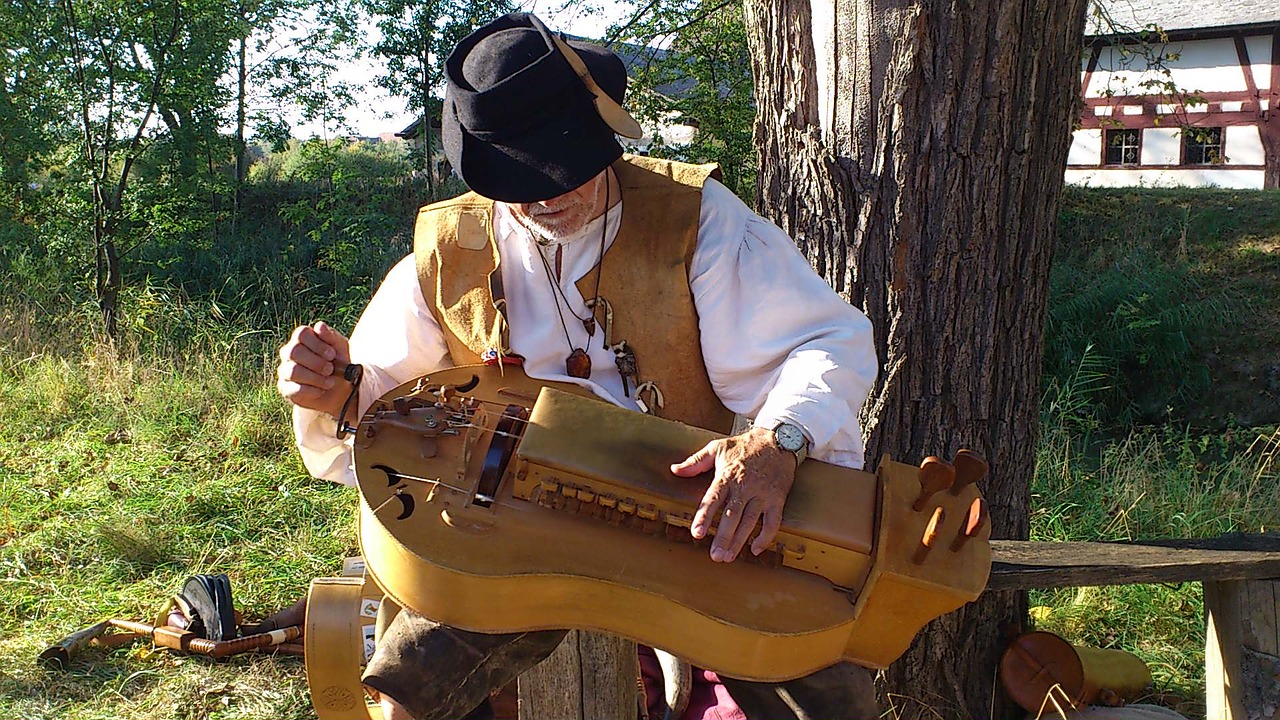
Are you curious about how bagpipes and hurdy gurdy sound together?
Check out this track!
6. Medieval Music in Pop Culture
Nowadays, originally played medieval music falls under the umbrella of “early music”, with concerts taking place in castles, churches and concert halls.It must be admitted, however, that for the wider public it is rather hard to digest and is considered strange music, even for fans of classical music.
An alternative to the classical approach to medieval music is folk music, which often draws on medieval music, due to the common “folk” factor in both genres.
Speaking of folk music, we go back to the simple, atavistic approach to music, which was intended to unite man with nature, arouse simple emotions, and make him dance. And all this with the help of folk instruments that have remained unchanged since the Middle Ages. Flutes, drums, pipes, bagpipes, stringed instruments. Since the Middle Ages, they function in human consciousness, and they show their character to this day, in folk music.
The most popular example of folk music from the Middle Ages is Celtic music.
Who of us does not know the hit song by Simon&Garfunkel band “Scarborough Fair”. Medieval English song, whose melody has its roots in the Celtic culture.
The musical legacy of Celtic culture, developed strongly in the Kingdom of Great Britain and Ireland, and its influence can be heard in rock music, pop music, or even American Country.
An alternative to the classical approach to medieval music is folk music, which often draws on medieval music, due to the common “folk” factor in both genres.
Speaking of folk music, we go back to the simple, atavistic approach to music, which was intended to unite man with nature, arouse simple emotions, and make him dance. And all this with the help of folk instruments that have remained unchanged since the Middle Ages. Flutes, drums, pipes, bagpipes, stringed instruments. Since the Middle Ages, they function in human consciousness, and they show their character to this day, in folk music.
The most popular example of folk music from the Middle Ages is Celtic music.
Who of us does not know the hit song by Simon&Garfunkel band “Scarborough Fair”. Medieval English song, whose melody has its roots in the Celtic culture.
The musical legacy of Celtic culture, developed strongly in the British Isles and Ireland, and its influence can be heard in rock music, pop music, or even American Country.
Scandinavian Folk, which is a legacy of the Viking culture, is promoted by the world famous band Wardruna. In their music one can hear everything that could have resounded in the medieval music of those lands. Power, simplicity, rhythm, mysticism.
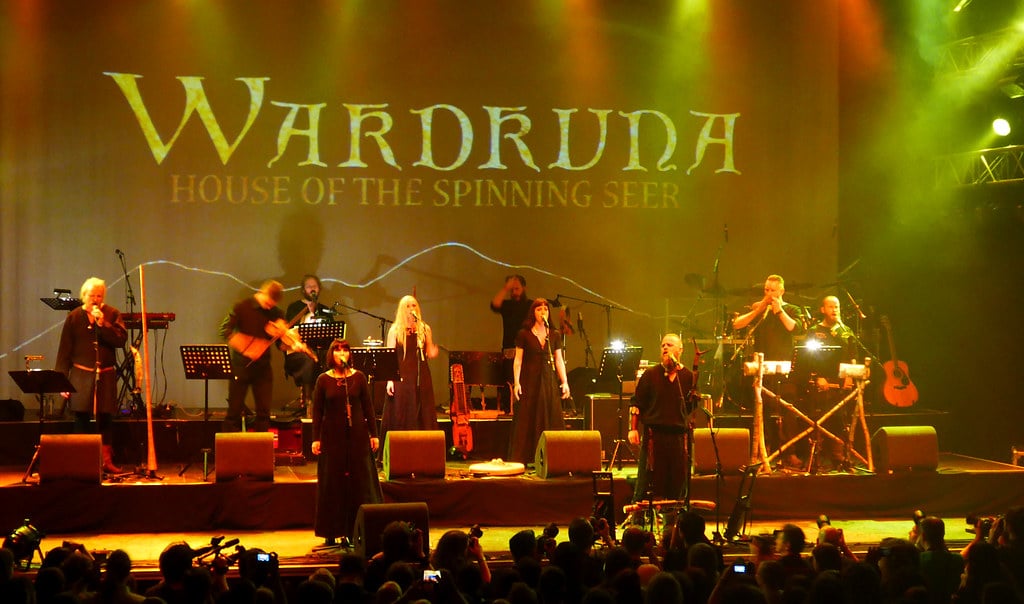
There are many, many more such examples. Basically, every country with a history dating back to the Middle Ages, smuggles a bit of the climate of the times many hundreds of years ago into its folk music. And it turns out that this music is still able to move the crowds.
Much more interesting and universal are also interpretations of medieval music, put into modern orchestral arrangements.
The greatest influence has definitely been the development of film music.
Soundtracks for movies such as “The Lord of the Rings” by Howard Shore, “Kingdom of Heaven” by Hans Zimmer or “Braveheart” by James Horner have become timeless examples of how medieval motifs can be incorporated into today’s trends and make people fall in love with them.
Where does medieval music find such potential? Well, it stems from very simple assumptions and tools that people of those times had at their disposal.
Apart from the harmonic principles of those times, which are in fact difficult for contemporary listeners to understand, melodies and motifs from the Middle Ages can be very easily rearranged and adapted to contemporary musical trends. Such combinations make us fall in love with the same melodies that were adored 600-800 years ago and modern music creators have at their disposal a huge field to search for inspiration. In my opinion, medieval music, like hardly any other epoch in the history of music, offers an almost infinite field for exploration and experimentation, which I encourage as a person professionally engaged in composing music and as a hobby in performing medieval music.
